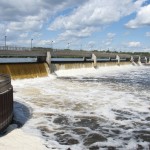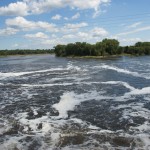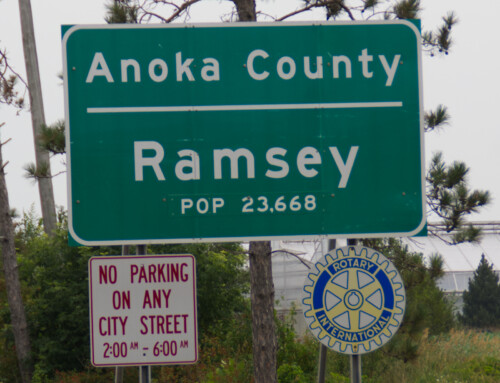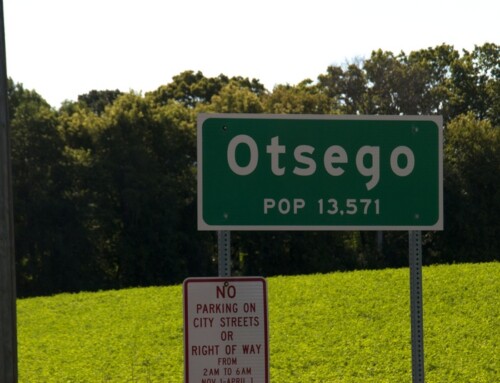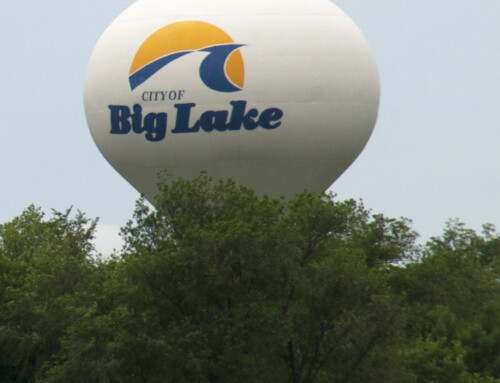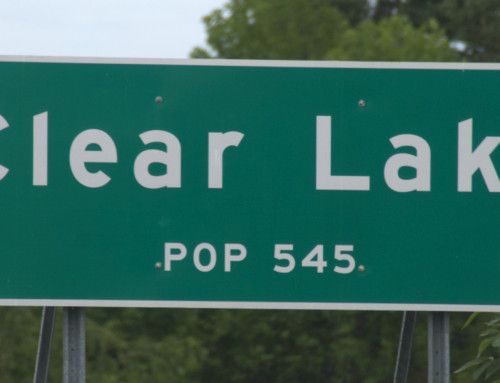Introduction
The quiet farms of old Brooklyn Park have been turned into quiet cul-de-sacs, from which sprang a couple of Minnesotans who have left quite a mark on their home state.
Visitor Information
Direct your questions to the North Hennepin Are Chamber of Commerce (763.424.6744).
History
The township of Brooklyn was initially settled by a group of 14 families who moved to the area in 1853. Most were from Adrian, Michigan, which was part of Brooklyn Township at the time, so they took the easy route at a meeting in 1858 by adopting the name of their old township for their new one.
Early businesses included sawmills, a boom house for sorting logs, and an ice harvesting facility. One of the better known early residents was Pierre Bottineau, a former fur trader/voyageur/translator who put down roots long enough for the area to be known as Bottineau’s Prairie.
Most of the early residents were farmers, attracted by the easily tilled loamy soil. While wheat was the crop of choice early on, farmers soon shifted to potatoes and a wide range of produce to supply the growing city of Minneapolis.
During the Depression, a cottage industry developed pulling “deadheads” from the river bottom. Deadheads were logs that had been cut during the peak logging years but had been lost to the river while being driven to sawmills. The Scherer brothers of Brooklyn township were especially adept. They found a pile of logs buried 20 feet under the river bed that was so plentiful it was nicknamed White Pine Island; it eventually yielded 1½ million board feet of lumber. From 1930 to 1950, some 22 million board feet of lumber was processed from recovered deadheads, and the Scherer brothers were responsible for nearly three-quarters of that total.
Motivated by a plan to allow a developer to discharge waste water into wetlands near his home and into the Mississippi River, Brooklyn Park resident and former professional wrestler Jesse Ventura ran for mayor to stop the plan. He won, serving as mayor from 1991 to 1995; he was elected Governor of Minnesota just four years later. Brooklyn Park was also the childhood home of radio personality Garrison Keillor, whose parents moved there in 1947.
Much of the township was incorporated as the city of Brooklyn Park in 1954, which grew from a small town to a busy suburb in one generation as its population increased from 3,065 residents in 1950 to over 75,000 in 2010. The city also counts several thousand community college students among its ranks (Hennepin Technical College and North Hennepin Community College).
The city has seen increasing cultural and ethnic diversity since the 1980s, with substantial increases in the number of Asian (Hmong, especially) and African American residents.
Exploring the Area
John and Isable Eidem, immigrants from Norway, built a house for their large family (they had 14 children, 9 of whom lived to adulthood) in 1877. The estate of their son, John Jr., is now a living history museum operated by the City of Brooklyn Park as the Eidem Homestead (4345 101st Ave. North; 763.493.4604).
The Mississippi National River and Recreation (651.290.4160) runs for 72 miles through the Twin Cities. While the National Park Service owns very little land along the corridor, it has many programs to help connect people to the river. Visit their website for a complete listing of places to enjoy the river.
Parks Along the River
Mississippi Gateway Regional Park (10360 West River Dr.) includes a scenic walkway across the Coon Rapids dam, 2 miles of walking trails, and many good places to rest and picnic next to the river. [NOTE: The park is undergoing a major renovation as of 2023 but will remain open during the work.]
River Park (101 83rd Ave. North) offers 42 acres of shaded peacefulness next to the Mississippi, including a paved multi-use trail and a playground.
Entertainment and Events
Farmers Market
You can sample products at the Brooklyn Park farmers markets on Wednesday afternoons from mid-July to late October at Zane Sports Park (8717 Zane Ave.; 763.493.8333).
Festivals
Early European settlers discovered that the sandy soil around Brooklyn Park was an excellent place to grow potatoes, which is why the city’s signature festival celebrates the humble spud, even if suburban growth has eaten up most of the farmland. Tater Daze (763.493.8013) kicks off in mid-June, with events at the Community Activity Center (5600 85th Ave. N.) that include live music, food booths, and a parade.
**Looking for more? Check out Road Tripping Along the Great River Road, Vol. 1. Click the link above for more. Disclosure: This website may be compensated for linking to other sites or for sales of products we link to.
Where to Eat and Drink
Start your day off right with a hearty breakfast at Fat Nat’s Eggs (8587 Edinburgh Center Dr.; 763.425.0117), where you’ll have a hard time deciding which version of eggs benedict you want, assuming you can ignore the many other delicious breakfast options.
For a taste of West Africa, Liberian-style, head to Mama Ti’s Liberian Restaurant (7800 Zane Ave. N.; 763.566.1009). The menu includes a fish dish called attieke, jollof rice with chicken and beef (or without meat), and oxtail, as well as dishes with plantains, and couscous.
Where to Go Next
See the Twin Cities Overview for tips on festivals, getting around, and more.
Continuing downriver? Check out Brooklyn Center.
Continuing upriver? Check out Champlin.
Community-supported writing
If you like the content at the Mississippi Valley Traveler, please consider showing your support by making a one-time contribution or by subscribing through Patreon. Book sales don’t fully cover my costs, and I don’t have deep corporate pockets bankrolling my work. I’m a freelance writer bringing you stories about life along the Mississippi River. I need your help to keep this going. Every dollar you contribute makes it possible for me to continue sharing stories about America’s Greatest River!
©Dean Klinkenberg, 2024, 2021, 2018,2013,2011
